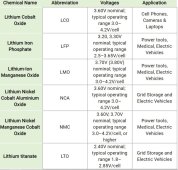Hi all,
After reading a lot about LifePO4 safety I am now a bit scared to use NMC even though when used within the specs they both are safe...
The price for LifePO4 is about 150-160 EUR per kWh (B-grade 4000 cycles) and 190-200 EUR per kWh (A-grade 6000 cycles).
The price for NMC is about 100-110 EUR per kWh (B-grade 4000 cycles).
This is a big difference when you go for ~40 kWh capacity.
Location will be indoor, room temperature. No option to place the batteries outside.
Which chemistry would you choose accounting the costs. I don't really have the budget for LifePO4 though...
(It's for an powerall based on Victron).
After reading a lot about LifePO4 safety I am now a bit scared to use NMC even though when used within the specs they both are safe...
The price for LifePO4 is about 150-160 EUR per kWh (B-grade 4000 cycles) and 190-200 EUR per kWh (A-grade 6000 cycles).
The price for NMC is about 100-110 EUR per kWh (B-grade 4000 cycles).
This is a big difference when you go for ~40 kWh capacity.
Location will be indoor, room temperature. No option to place the batteries outside.
Which chemistry would you choose accounting the costs. I don't really have the budget for LifePO4 though...
(It's for an powerall based on Victron).




